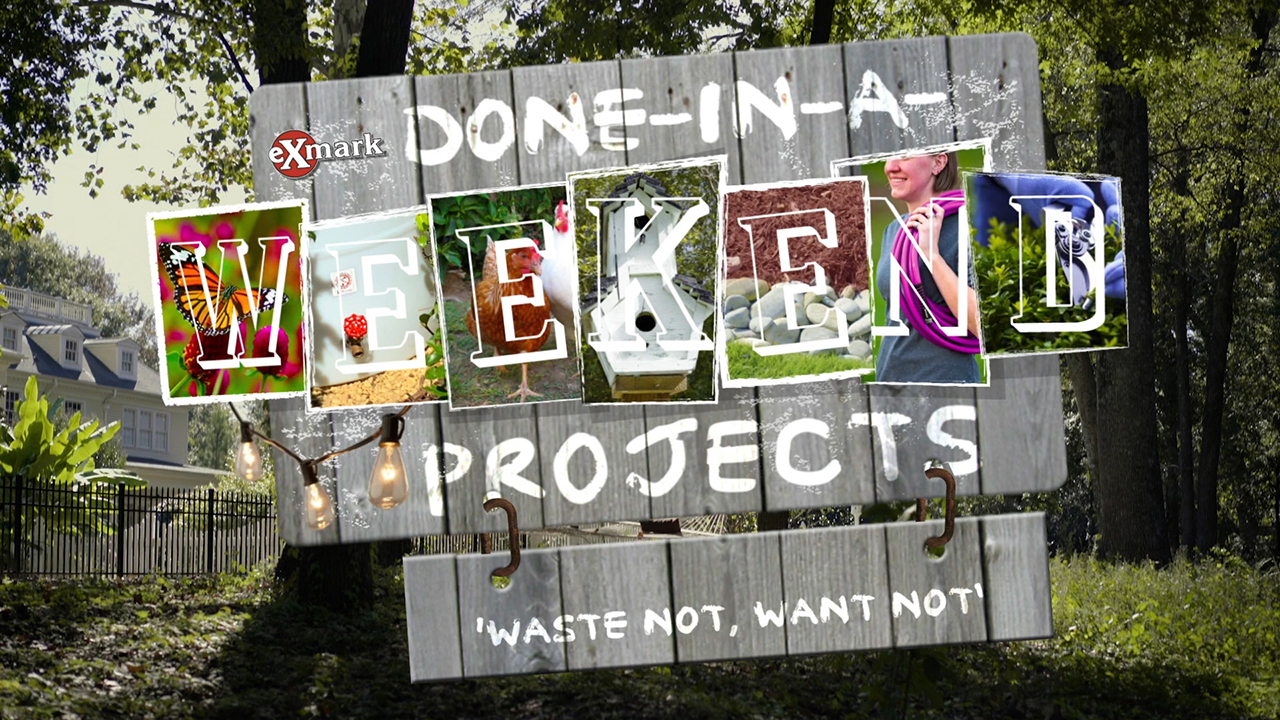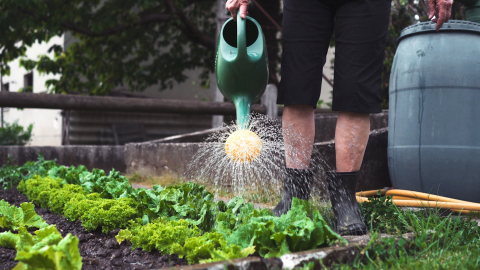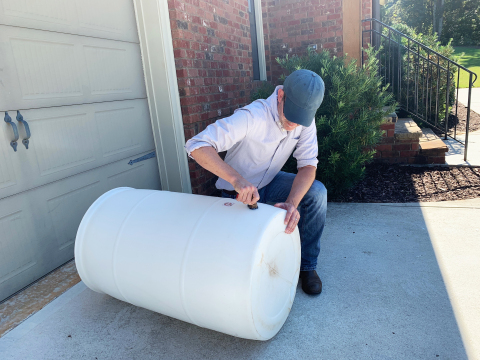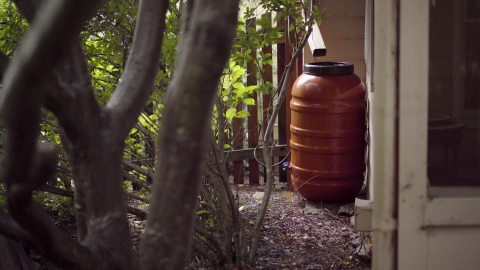BEATRICE, Neb.--(BUSINESS WIRE)--It takes a good deal of time, effort and resources to maintain a beautiful landscape. Water is one of the most important resources, so today more and more homeowners are turning to rain barrels as a supplement to traditional irrigation.
According to landscape designer, Doug Scott, of Redeem Your Ground in Atlanta, Georgia, the average 25- by 40-foot home roof sheds approximately 600 gallons of water in one hour of moderate rainfall, 80 percent of which is harvestable.
“For a growing number of homeowners, rain barrels are a great supplement to traditional irrigation systems for hydrating plants around the yard, all while minimizing monthly water bills,” Scott says.
Scott has partnered with Exmark on a new ‘Done in a Weekend’ video, Waste Not, Want Not. It helps homeowners construct a simple rain barrel that can provide enough water to sustain potted plants, or a small flower garden.
“Keep in mind, collected rainwater should only be used to irrigate your lawn and garden. It should not be consumed unless properly filtered and tested for potability,” Scott advises.
The first step in constructing a rain barrel is to determine its placement. Typically, this will be underneath or adjacent to the downspout you intend to use as the primary rainwater source. Avoid placing barrels near septic services, utility lines or HVAC components.
Scott says all rain barrels should have overflow ports to enable excess rainwater to easily flow out of the system once the barrel is full.
“It’s important to create a clear path for water to drain if the barrel fills beyond its capacity,” Scott says. “To accomplish this, most homeowners will either lay pea gravel on the ground beneath the storage tanks, or connect the overflow port to the underground drainage system previously being used.
“You don’t want to create problems with water pooling next to your home’s foundation, so make sure water drains freely away from it.”
Once placement has been determined, construction of the rain barrel can begin. The materials Scott uses in his project include: a 55-gallon water barrel, or large garbage can with a lid; a spigot kit with bulkhead fitting; mesh screen; waterproof silicone sealant and PTFE thread tape.
“If a downspout needs to be diverted, you may also need additional materials for that,” Scott says.
In Waste Not, Want Not, Scott demonstrates the steps to prepare, assemble and place the rain barrel. These include: preparing the barrel and drilling the appropriate holes; installing the bulkhead fitting and spigot; accommodating the diverter and its bulkhead fitting. The last step is to place the rain barrel in its new home.
Visit WeAreExmark.com/DIY to view Waste Not, Want Not, and other videos in Exmark’s 2019 ‘Done in a Weekend’ series.
About Exmark
Exmark Manufacturing was incorporated in May 1982 as an independent manufacturer of professional turf care equipment. Today, it is the leading manufacturer of commercial mowers and equipment for the landscape professional. Exmark mowers are trusted 2-to-1 over the next best-selling brand of zero-turn mowers by landscape professionals. In addition to designing, building and marketing quality turf care equipment, Exmark’s goal is total customer satisfaction. All Exmark products are designed to help customers increase productivity while delivering unmatched quality. Products are sold to distributors and dealers who share the company’s commitment to customer service and quality products. Learn more at Exmark.com.






